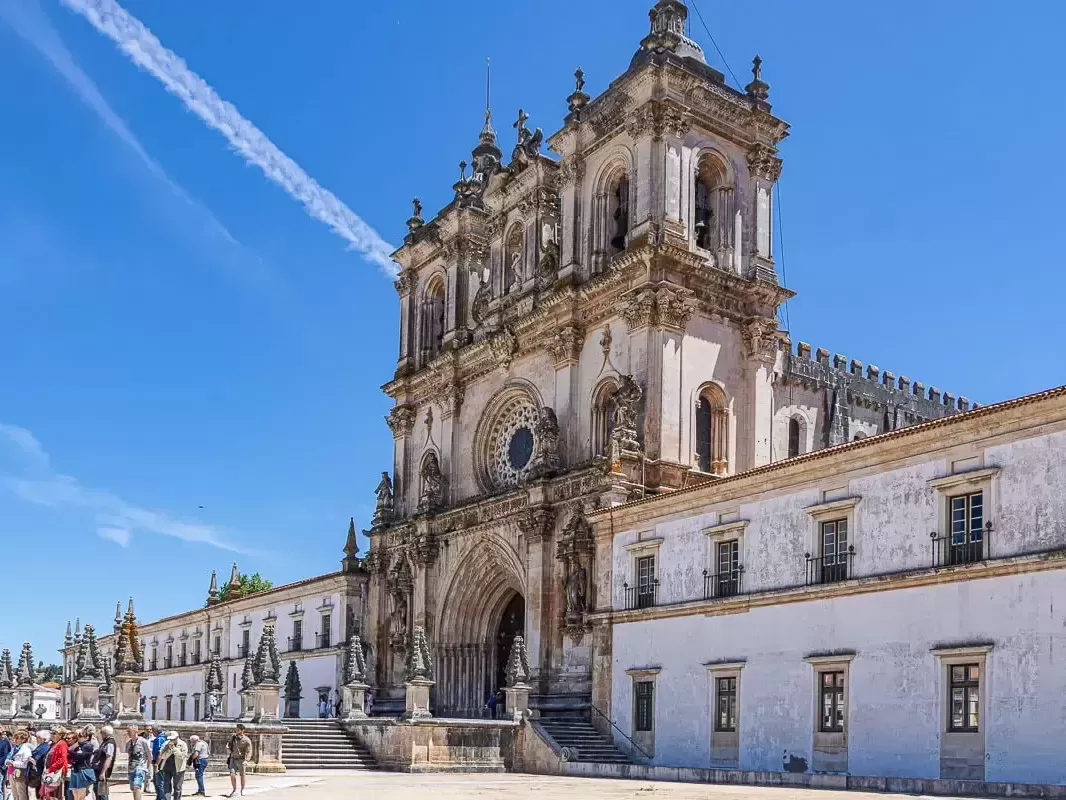Located in the
parish of Belém, in Lisbon, it was built in 1502 by King Manuel I. It was
considered a national monument in 1907 and 1983 it was classified as a World
Heritage Site by UNESCO. The works of one of the most visited monuments in
Portugal, lasted about a century and are the ex-libris of Manueline
architecture in Portugal.
The monument
was built with the riches obtained during the period of the Discoveries, having
been an important place for sailors, who received spiritual advice from the
monks.
The monastery
was occupied by the Order of Saint Jerome, it currently does not have this
function, however, it continues to receive Eucharists in important
celebrations. In 2016 it received the status of National Pantheon, where the
famous poet Luís de Camões is buried.

Also known as
the Monastery of Santa Maria da Vitória, it was built by King João I of Portugal,
in honour of the Virgin Mary, after the victory against the Spaniards, in the
battle of Aljubarrota. 200 years was the construction time of the monastery
with Gothic architecture, which spanned seven reigns. It is one of the Seven
Wonders of Portugal and has been a National Monument since 1910.
The space
formerly occupied by the Order of Saint Dominic, receives more than 400,000
visitors per year, functioning only as a Museum and National Pantheon, since
2016. Several figures of the second dynasty of the Portuguese monarchy are
buried here, including Infante Dom Henrique and Filipa Lencastre, wife of D.
João I of Portugal.

This is the
first Gothic architecture building in Portugal, with works beginning in 1178,
by the hand of the Order of Cistercians. It was inaugurated in 1252 and was
built while D. Afonso Henriques tried to reconquer the territory, which is now
Portuguese, from the Moors.
The monastery
was built in honour of the conquest of Santarém and is the largest built in
Portugal. With a long facade, it is almost impossible to photograph it
completely.
It was in this
place that, according to reports, Pedro and Inês met and fell in love, having
started the most dramatic love story that Portugal has ever known.

Located in
Vila Nova de Gaia, in the Porto district, the building is located in a
privileged location overlooking the Luís I Bridge and the Historic Center of
Porto.
It was built
during the Renaissance, with work beginning in 1538 and completed in 1672. It
belonged to the Order of Canons Regular of Saint Augustine and has been a
UNESCO World Heritage Site since 1996.
Since 2012, it has been possible to visit the space, although now it also has military functions, in a certain part of the building.

Deeply in love with music and with a guilty pleasure in criminal cases, Bruno G. Santos decided to study Journalism and Communication, hoping to combine both passions into writing. The journalist is also a passionate traveller who likes to write about other cultures and discover the various hidden gems from Portugal and the world. Press card: 8463.














